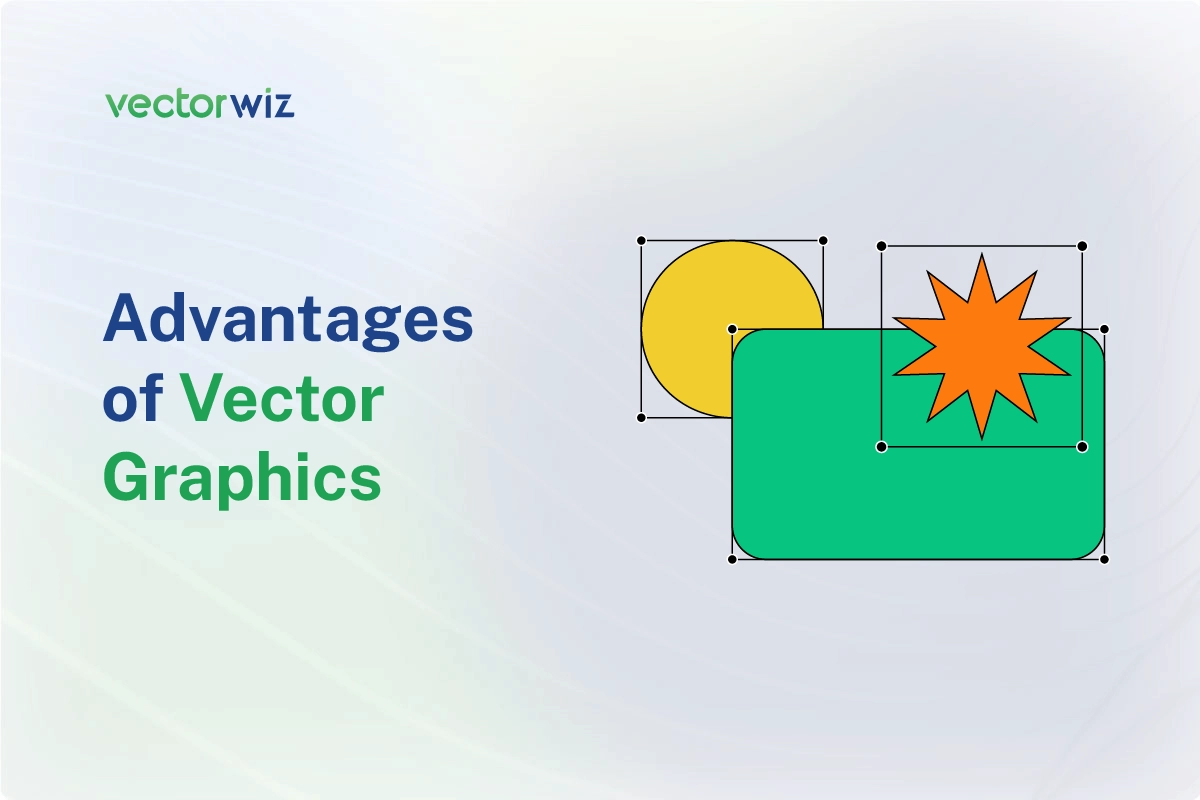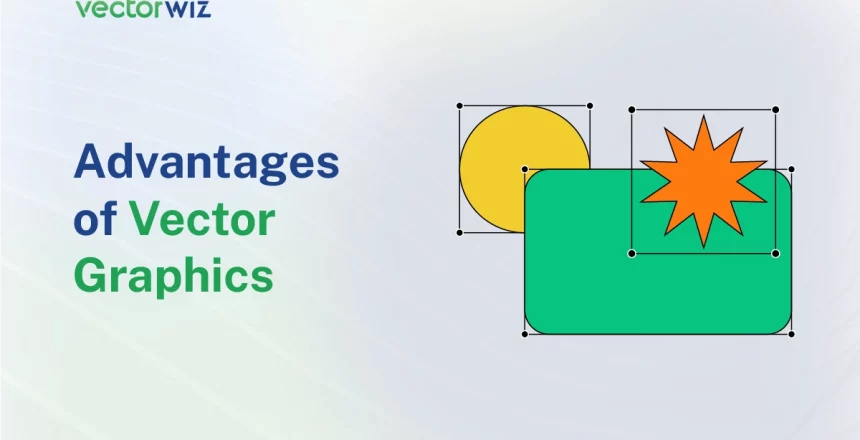The advantages of vector graphics over raster images make them indispensable in various design fields. They provide scalability without loss of quality, smaller file sizes for efficient storage and faster loading times, and the ability to easily edit and manipulate individual elements.
Let’s delve into the detailed advantages of vector graphics and why they are preferred in modern design.
Advantages of Vector Graphics
1. Infinite Resolution
Vector graphics boast infinite resolution, a standout feature that ensures images remain sharp and clear no matter how much they are scaled. This advantage of vector images is particularly crucial for designs that need to adapt to various sizes without sacrificing quality.
2. Scalable
Vector graphics are unparalleled in their scalability. Whether a tiny icon or a massive billboard, vector images can be resized without losing its quality or detail. This versatility makes them indispensable in design projects of all scales.
3. Lightweight (Small File Size)
Due to their mathematical nature, vector graphics have incredibly small file sizes compared to their raster counterparts. This efficiency is invaluable for web design, where faster loading times improve user experience and SEO ranking.
4. Intuitively Created
Vector graphics are created using points, lines, curves, and shapes, allowing for intuitive and precise design creation. These elements are easy to draw and manipulate on a computer, which makes it easy for designers to implement their creative visions quickly.
5. Easily Manipulated
One of the most significant advantages of vector graphics is their ease of manipulation. Elements within a vector image can be simply modified, resized, reshaped, and repositioned. This flexibility streamlines the design process, enabling quick adjustments without losing quality.
6. Easily Reusable
Once created, vector graphics are highly reusable across various projects. Elements like logos, icons, and illustrations can be repurposed effortlessly without losing quality. This reusability saves designers time and effort and ensures brand consistency.
7. Multipurpose
Vector graphics are incredibly versatile and have applications in various design fields. From logos and icons to infographics and animations, vector images easily adapt to diverse design needs.
8. Can Produce Very Realistic Results
Despite their inherently clean and precise nature, vector graphics can produce remarkably realistic results. Skilled designers can use techniques like gradients and shading to create lifelike illustrations and designs, blending realism with the advantages of vectors.
9. Can Be Animated
Vector graphics are not limited to static images; they can be animated to create dynamic visuals. Animations created with vectors maintain their sharpness and quality, making them ideal for web animations, motion graphics, and more.
10. Editable with Code
Vector graphics are editable not only with design software but also with code. This feature is particularly valuable for web developers who can manipulate SVG (Scalable Vector Graphics) images directly in HTML and CSS, providing dynamic and responsive visual elements on websites.
11. Interactive
Vector graphics can be interactive, allowing users to engage with clickable buttons, maps, and data visualizations. This interactivity enhances user experience in websites, applications, and educational materials.
Statistics and Facts
- The Google study found that 40% of users leave a website if they wait more than three seconds for it to load. With their smaller file sizes, vector graphics contribute to faster loading times.
- Incorporating vector graphics with web design is becoming popular, with a 16% increase in vector image searches on Google in the past year alone.
Disadvantages of Vector Graphics
While vector graphics offer numerous advantages, they are not without their limitations. When choosing between vector and raster images, you need to consider the following factors:
1. Complex Detailing Challenges
Vector graphics excel at simple shapes and designs, but intricate details can be challenging to replicate. Complex textures, gradients, and shading might not translate as effectively in vector format, requiring additional workarounds or compromises.
2. Performance in Complex Scenes
In scenes with many intricate elements, vector graphics can sometimes lead to performance issues. Rendering complex vector images in real-time, such as in gaming or animation, might require significant processing power compared to raster images.
3. Learning Curve for Beginners
Working with vector graphics demands a level of understanding of vector-based software. Compared to the more intuitive nature of raster image editing tools, beginners may find the learning curve steep.
4. Limited Photorealism
Vector graphics are inherently suited for crisp, clean designs rather than photorealistic images. Raster images might be more suitable if the goal is to create lifelike photographs or highly detailed imagery.
5. File Format Limitations
While vector formats like SVG are widely supported, some platforms or older software versions might not fully support them. It’s essential to ensure compatibility when sharing or distributing vector files.
Final Thought
Understanding the advantages and disadvantages of vector graphics is crucial for designers and businesses alike. While they offer unmatched scalability, efficient file sizes, and easy editing, they also have limitations in complex detailing, performance in certain scenarios, and a learning curve for beginners.
By leveraging the strengths of vector graphics and mitigating their drawbacks, designers can create impactful visuals across various mediums with efficiency and precision.


